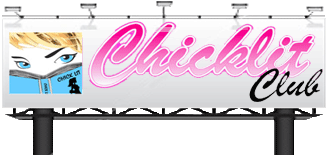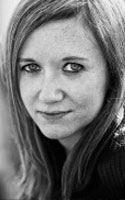


Laura Barnett is a arts journalist and theatre critic whose debut novel, The Versions of Us, was recently published. She lives with her husband Andy in London. (Interview by Jade Craddock)
Thank you! The three-part structure was key to the novel from the very beginning. I basically woke up one morning with the idea in my head. At that stage I didn’t know quite who the characters were, but I knew I wanted to explore the story of a relationship, told from beginning to end, in three different ways. The novel was so clear in my mind that I thought I might have already read it - but after a good deal of research, I was reassured that this wasn’t the case, and so I set about writing it myself.
It’s funny - I’m aware that it sounds like quite a complex structure when I summarise it, and I suppose it is complex, but for the most part, I didn’t find it so at all as I was writing. A few days after I first had the idea, I sat down and wrote character sketches for the two protagonists, Eva and Jim - just a few sides of A4, getting to know them, and roughly plotting out their life stories. Then I wrote a short summary for each version, working out how they might differ, and how they might stay the same. I departed from these quite a lot as I wrote - and I did so swapping between the three versions continually; plaiting them together, rather than writing them separately - but these synopses were the roadmaps, if you like, that kept me going in the right direction.
A very interesting question. The best part, I think, was that act of plaiting together the three versions: of teasing out the myriad ways in which one decision, made unthinkingly, draws us down one path, rather than another. I had fun playing with the idea of mirroring: with exploring the ways in which Eva and Jim’s lives turn out almost the same in certain places, and completely differently in others. As for the worst… Well, I found version two hard-going at first, as I felt - without giving too much away - that Eva and Jim were almost like magnets that wanted to come together, and keeping them apart required quite a lot of effort. But by about halfway through the first draft, I was enjoying writing each version equally.
Well, I’m wary of being too didactic about what my book has to say about love, or anything else - I hope each reader will bring his or her own experience to the novel, and make up their own mind. But I was certainly interested in writing a different kind of love story - one that dispensed with the whole idea of happy ever afters, and looked instead at love as it is actually lived, day by day, with all the small joys and tragedies that define all our relationships. And while there’s certainly a sense that Eva and Jim are “fated” to meet - that the best possible version is the one in which they find a way to be together - I also wanted to explore the potential fallacy of the whole idea of “the One”, and look at whether we can’t actually find a way to be happy, whoever we might happen to meet, and wherever our lives take us.
Ah, well that would be telling! No, seriously, as I mentioned above, I struggled a bit with version two at the start, when I would say my personal affiliation was veering towards version one - probably because it’s the most “classic” romantic narrative, at least at first, and when I started writing I was a relative newlywed myself! (I’d got married six months before). But that changed continually as I wrote, and by the end I definitely felt an affinity with each version, and with the different aspects of Eva and Jim, and both their lives, captured in each one.
Ha - another very good question! Well, luckily, in some ways life as an author isn’t too different from life as a freelance journalist - I’m still working at home in the same attic office, and I still get to go for my morning runs, and stare out the window as often as necessary (which is quite often). I think perhaps I imagined I’d have more time to write than I actually do at the moment - I’m busy supporting The Versions of Us in every way I can, so my writing time is pretty limited right now. But that is a pleasure and a privilege in itself, and come the autumn I’ll close my Twitter account (or at least limit my time on it, and other social media!) and get back to the very important business of writing.
Finding an agent. Agents are hugely busy people - more than ever before, I think, as publishers now expect to receive manuscripts that are more or less ready for publication, whereas several decades ago, the bulk of the editing work would have been done later, after the contracts had been signed. I contacted several agents before finding a home with the very lovely Judith Murray at Greene & Heaton, and I certainly experienced my fair share of rejection. But I do believe that if you know, in your heart of hearts, that you have something interesting to say, and that you have worked as hard on your book as humanly possible before submitting it, then you will find the right person for you. It may take years - it certainly took that long for me; I have two full novels in my bottom drawer that will never see the light of day - but if you want it badly enough, and you are prepared to work hard, you will make it happen.
Yes - The Versions of Us has been optioned for TV by Trademark Films, who made the amazing Parade’s End, Shakespeare In Love, and many other wonderful things. I never imagined that might happen - well, only in my wildest dreams! - but looking back, I think I did have very clear visual images in my head as I wrote. I studied Italian, Spanish and Latin American film at university, and am very inspired by the narrative techniques employed by TV and film, and I think my writing generally has a very visual element. I’m so looking forward to seeing how a screenwriter and director might respond to the challenge of depicting two characters, in three different versions, across sixty years… It will certainly be no mean feat!
It is indeed. It’s about a female singer-songwriter, in her sixties, looking back on her life and career. I’m in the early stages of writing, so I won’t say much more about it than that - but it’s about the relationship between art and life, and about the challenges posed to women, in particular, by fame and success.
Relatively easy, in that I’m really interested in my new character and this new story - but it’s certainly sobering to go back to a blank screen (I write on my laptop) after working on The Versions of Us for so long.
Just to keep writing, really - and to do so to the very best of my ability, and with all the emotional energy I can possibly muster. All I’ve ever wanted to do is write novels; it’s more than I can really believe that I now have the chance to actually do so for a living!
That’s very kind - thank you. Ah, I’ve enjoyed so many books this year already - I’m the sort of person who has a panic attack if I step on the tube and realise I’ve left my book at home! I loved Plainsong by Kent Haruf - a beautiful novel by a writer whose sparse, emotive prose was a complete revelation to me. I also really enjoyed Still Life with Breadcrumbs by Anna Quindlen - another American author (I read a lot of American fiction) who brilliantly captures the contours of everyday life. As to what I’m looking forward to, I’ve just been sent a copy of Finding Home: Real Stories of Migrant Britain by Emily Dugan. I don’t read a lot of non-fiction, but this tells the real stories of ten migrants to the UK, and it looks like a really necessary, brave attempt to go beyond the hysterical headlines about immigration. And I can’t wait to get started on A God in Ruins by Kate Atkinson - Life After Life was such a brave, brilliant, skillful novel, and I’m sure this will be just the same.
Wow, you’re really making me think! (A good thing, of course). I am scouring my memory… Ah, here is a moment. I’m about five years old, I’m sitting in the dining-room of my grandparents’ house in Nailsea, near Bristol, looking out at my grandpa’s magnolia tree. I’m thinking about how much I want to describe that tree in words - how eventually its beauty will disappear, and that I want to find a way to describe it before it does so. So I ask my mum for a piece of paper, and I write a poem about it. I suspect all my writing, since then, has been motivated by that same desire: to capture some aspect of the life we live, whether beautiful or sad, before it slips away forever.